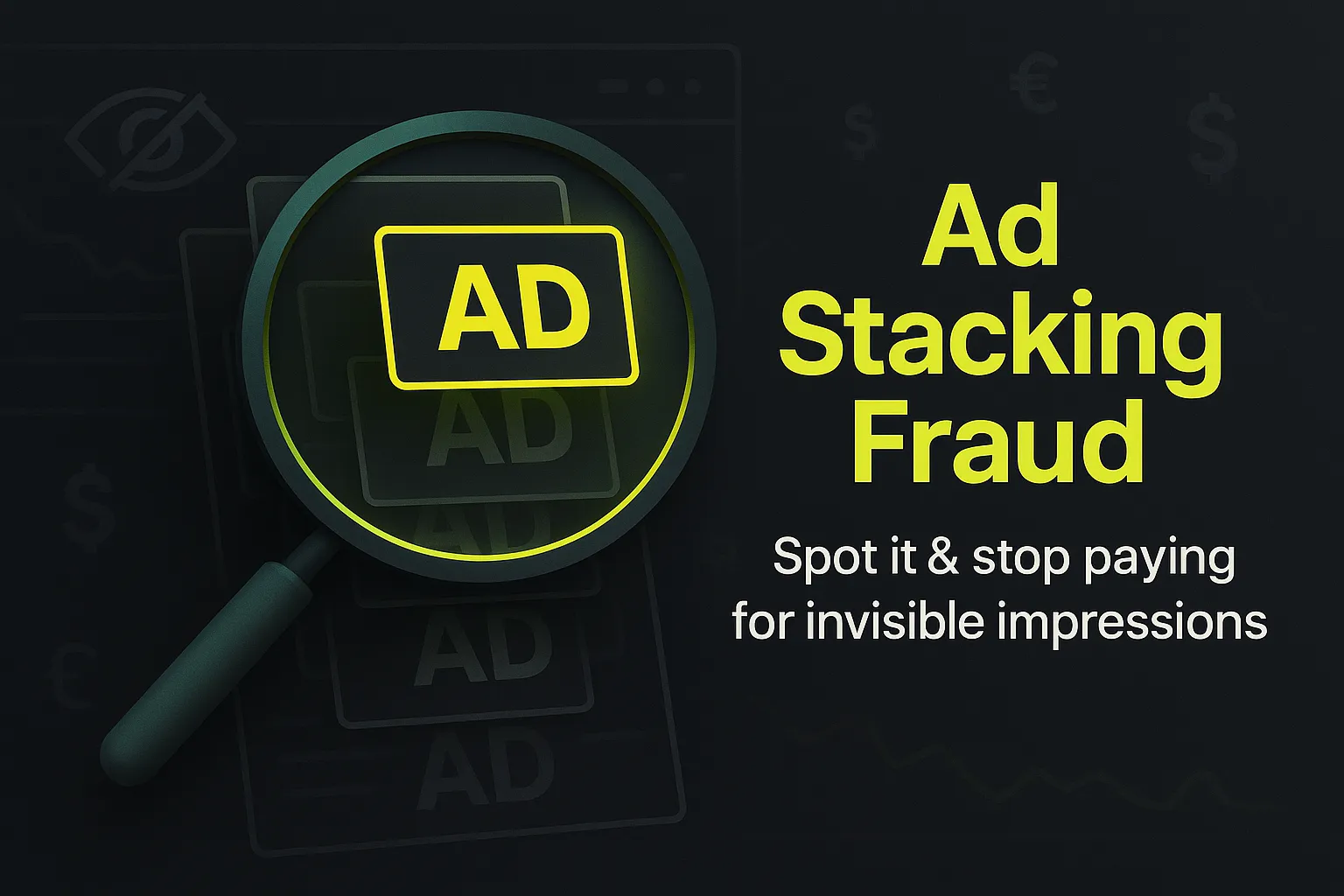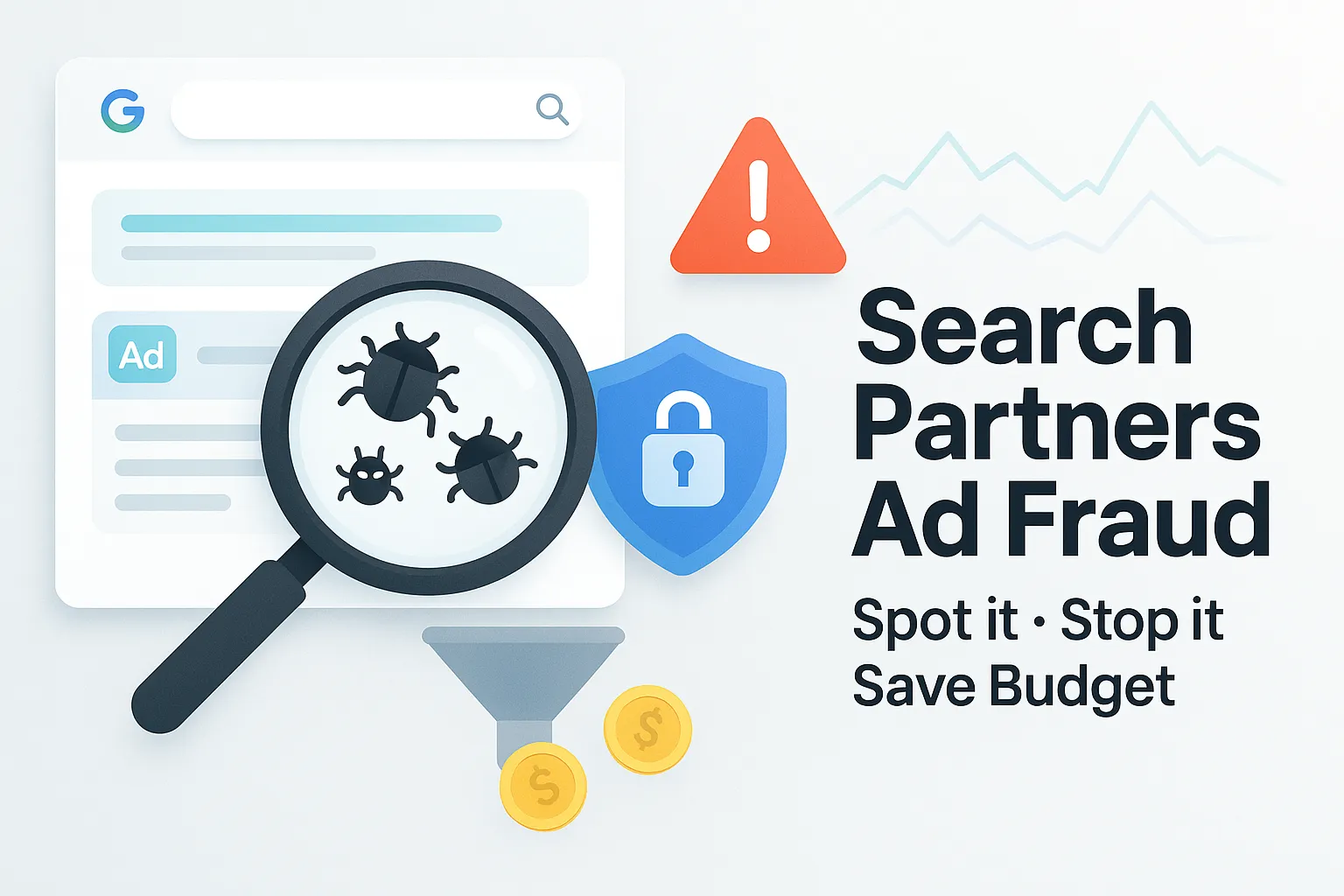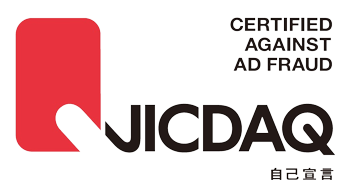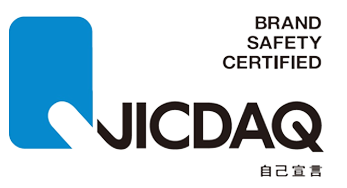Agency Ad Fraud Risks: How to Protect Your Media Budget in 2025
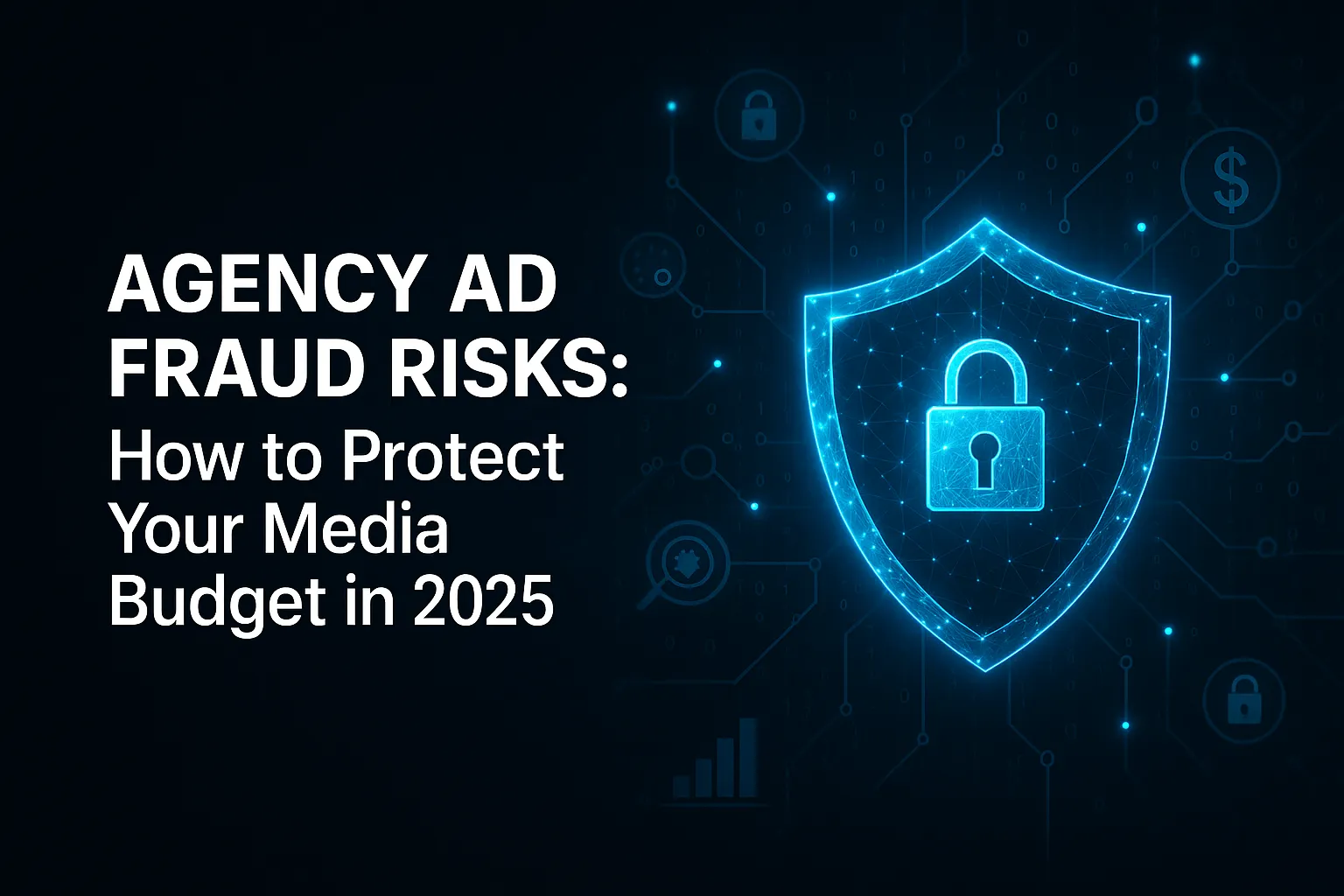
The last two years have proven that ad-fraud is no longer an isolated line-item loss buried deep inside marketing P&Ls—it is a fast-evolving, multi-billion-dollar threat capable of eroding the very KPIs your agency is paid to deliver. Industry studies show that only 36 cents of every programmatic dollar actually reaches a real consumer, while nearly a quarter of the open-web ad budget is siphoned off by invalid impressions or outright fraud. In dollar terms, global losses are projected to climb from $37.7 billion in 2024 to $41.4 billion in 2025, outpacing overall digital-spend growth and squeezing true return on ad spend (ROAS).
Yet many advertisers still depend on external media agencies whose tech stacks, billing models, and reporting cadences can blur accountability. These structural blind spots—combined with increasingly sophisticated AI-driven botnets and click farms capable of selling 1,000 fake views for a single dollar—create a perfect storm in which “good” campaign metrics mask “bad” business outcomes. High-profile audits in Q2 2025 revealed that 40 % of web traffic across major U.S. campaigns was non-human, despite agencies claiming they had industry-standard verification in place.
That is why the phrase “agency ad fraud risks” now echoes in quarterly earnings calls and investor memos. Failing to confront it can mean missed sales targets, inflated CAC, and damaged brand trust—problems that snowball long after the media flight ends. Conversely, marketers who treat these risks proactively enjoy tighter performance baselines, better forecasting accuracy, and leverage to negotiate results-based contracts that protect every dollar.
This guide dissects agency ad fraud risks from the ground up. You’ll learn where fraud hides in typical agency workflows, how to recognize early warning signs, and exactly what to demand in service-level agreements. We’ll also show how specialized platforms—such as Spider AF’s PPC Protection, Fake Lead Protection, and SiteScan modules—slot into an agency stack to seal every leak. By the end, you’ll have a 120-day roadmap and a practical checklist you can bring to your next agency meeting.
#1 – Understanding Agency Ad Fraud
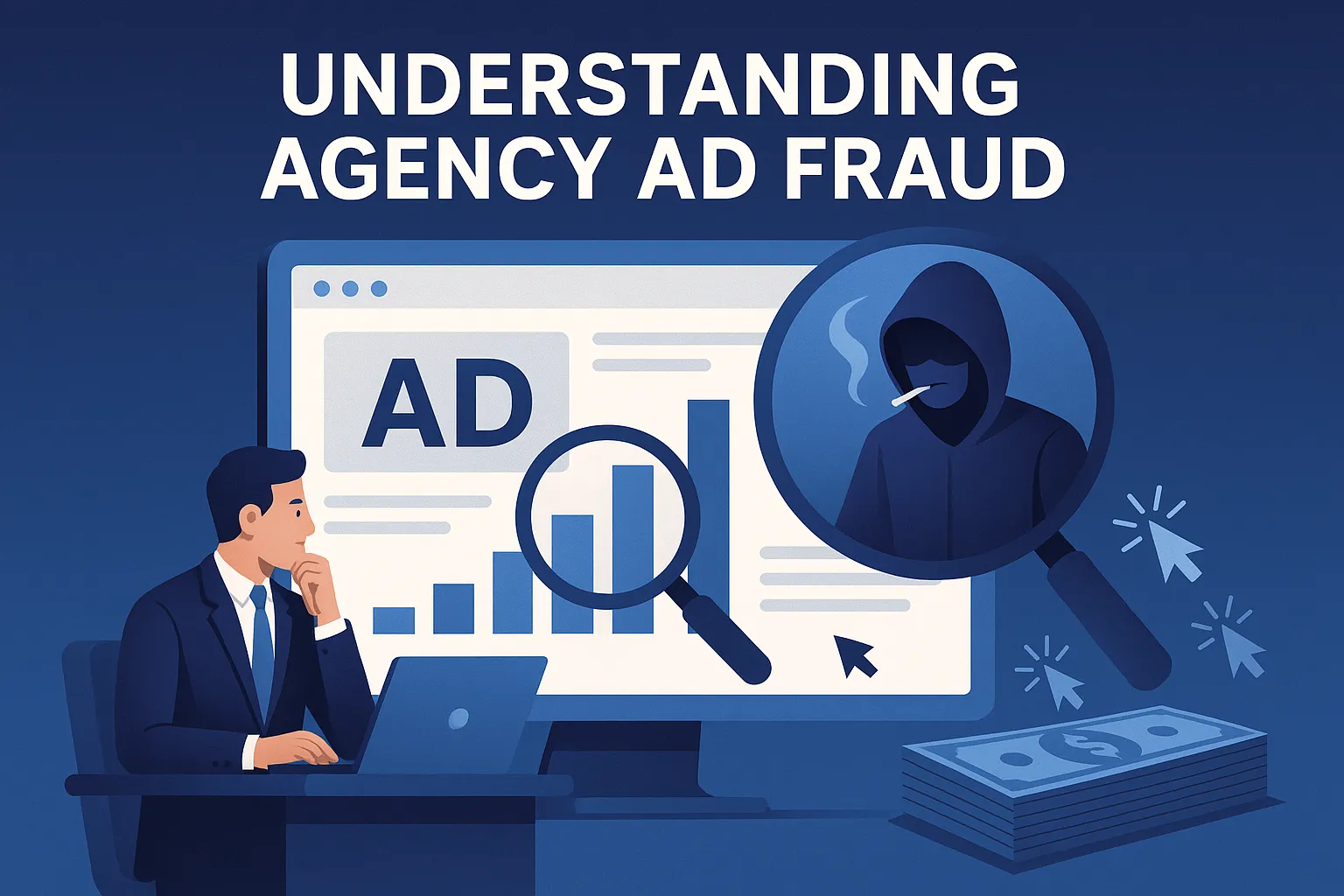
1.1 — Key Definitions & Scope of Ad Fraud
Ad fraud is any scheme that generates—or appears to generate—ad interactions from something other than a genuine, in-market human. The most common tactics include bot-driven impressions, click farms, domain spoofing, ad injection, SDK spoofing, and fake conversions. Together they fall under the industry label invalid traffic (IVT). Research threads these activities directly to organized cyber-crime rings because each fake click or view drains real budget while creating no path to revenue. In programmatic exchanges, where inventory is auctioned in milliseconds, fraudsters exploit automation at scale: they spin up look-alike sites, spoof app IDs, or rotate countless device signatures to evade detection. By the time an advertiser’s monthly report arrives, the money is already gone—and the fake engagement is buried inside blended metrics like CPM or CPA. Understanding these foundational mechanics is the first step toward reducing agency ad fraud risks, because it clarifies exactly what you must verify, filter, and ultimately refuse to pay for.
1.2 — Why Agency Set-Ups Create Blind Spots for Advertisers
Your media agency may deploy best-of-breed DSPs and present glossy dashboards, yet critical visibility gaps remain. First, agencies often bundle spend across hundreds of supply paths, and contractual “log-level” data is rarely passed back in raw form—so you can’t trace which publisher or exchange generated a suspicious spike in traffic. Second, fee structures that reward volume (e.g., percentage-of-spend or performance bonuses tied to impressions) inadvertently incentivize excessive scale over verified quality. Third, standard brand-safety or viewability tools were designed to flag obvious mismatches, not the sophisticated botnets now faking mouse movements and dwell time. Finally, when agencies rotate multiple subcontracted trading desks, each operating separate seats and tags, accountability fragments: if fraud erupts, everyone points elsewhere. These structural weaknesses allow IVT to masquerade as success, masking waste until post-campaign audits—by then, recovery is unlikely. Advertisers who grasp these blind spots can renegotiate SLAs, demand independent fraud logs, and require tech such as Spider AF to sit server-side on every impression, closing the loop before dollars leave the account.
#2 – Common Risk Vectors in Agency Partnerships
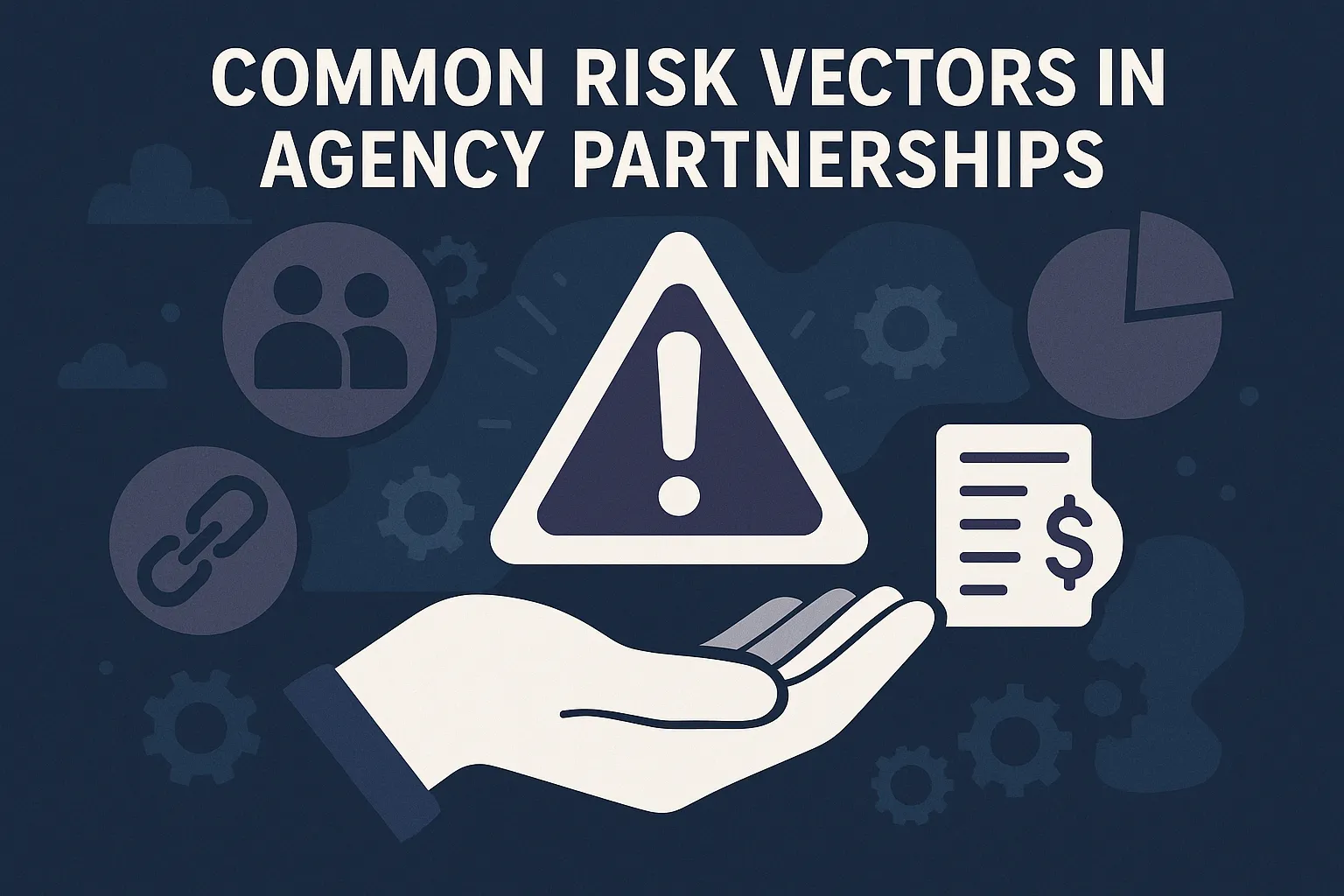
Even the most reputable agencies can unknowingly open doors to invalid traffic because the modern media supply chain is dense with intermediaries, incentive mismatches, and data gaps. Below we unpack three systemic weak points that repeatedly surface in audits and explain how they translate into real-dollar losses for advertisers focused on reducing agency ad fraud risks.
2.1 — Programmatic Buying Complexities
Programmatic campaigns often traverse five-plus hops—from DSP to SSP to exchange—before an impression even loads. Each hop inserts its own auction fee and, more critically, a new place where bad actors can spoof domains or slip Made-for-Advertising (MFA) sites into bundles. The ANA’s landmark transparency study calculated that of the $88 billion U.S. open-web spend, just 36 % makes it to a viewable placement, leaving $22 billion in pure waste; auditors traced a large share of that leakage to hidden supply-chain fees and undetected IVT. In March 2025, AI Digital’s supply-protection brief reinforced that a “DSP-only filter isn’t enough” because fragmented chains create blind spots bots exploit in milliseconds. When your agency aggregates inventory across thousands of unnamed publishers, you inherit every one of those risks—yet the invoices still arrive on time. To slash agency ad fraud risks here, demand inclusion-list buying, full seller-path disclosure (ads.txt / sellers.json), and server-side verification tags—Spider AF’s PPC Protection can inject these checks at bid time.
2.2 — Performance-Based Pricing Incentives That Backfire
Linking fees to clicks, installs, or “actions” sounds like perfect alignment, but it can quietly reward quantity over quality. A January 2025 fraud recap showed TikTok Ads with a 74 % click-fraud rate, Twitter/X at 61 %, and Facebook at 57 %—all networks where agencies often chase aggressive CPA targets. Commission or revenue-share contracts also tempt buying teams to inflate spend or tolerate low-quality traffic because every extra impression lifts their payout, even if it never converts into revenue. Industry pricing analyses caution that commission models “may incentivize spending more to increase commissions,” while pure CPA deals push some affiliates toward click-flooding to steal last-touch credit. The net effect: superficially stellar dashboards masking declining ROAS. Advertisers should cap incremental spend tied to payout tiers, audit attribution windows, and use Spider AF’s Fake Lead Protection to validate every post-click event before it credits an agency bonus—shrinking agency ad fraud risks without killing upside incentives.
2.3 — Fragmented Data & Measurement Silos
Most advertisers receive only aggregated weekly or monthly reports from their agency’s trading desks. The ANA study flags “Data Access” and “Information Asymmetry” as core problems: brands cannot retrieve raw log-level data because of contractual limits, leaving them blind to where anomalies originate. Meanwhile, subcontracted partners—specialist DSP seats, influencer networks, CTV resellers—each keep their own tags and trackers. Without a unified ledger, IVT that slips past one layer is rarely reconciled downstream, producing billing or pacing mismatches discovered months later. AI Digital notes that DSP-level filters alone miss bot traffic injected upstream at the SSP or publisher level—evidence of how siloed tooling undercounts fraud. Closing these gaps means hard-coding data-pass-back clauses, insisting on shared log-level storage, and running continuous impression-level audits. Spider AF’s SiteScan can sit client-side to reconcile what was actually rendered versus what was sold, adding an independent trail that forces transparency across every node and sharply lowers agency ad fraud risks.
#3 – Red Flags and Early Warning Signs

Modern fraud rarely looks like a giant spike on a dashboard. Instead, it creeps in through subtle statistical “tells” that surface long before the finance team notices overspend. Below are three patterns that audits flag most often when agency ad fraud risks slip past standard verification layers.
3.1 — Traffic Anomalies & Engagement Dips
When invalid traffic floods a campaign, the first clue is often a dislocation between volume and quality. In Q1 2025, Pixalate measured U.S. web IVT at 21 % and mobile-app IVT at 26 %, meaning one in four reported “users” was never a human in the first place. Spider Labs data further shows that fraudulent clicks convert at roughly half the rate of legitimate ones (1.29 % vs 2.54 %), dragging ROAS even as CTR looks healthy.
Watch for patterns such as:
- 30-second session durations on landing pages built for 3-minute video demos
- Geographic clusters from data-center IPs you don’t target
- Post-click scroll depth stalled at 0 % despite high “engagement” scores
Set automated thresholds (e.g., flag any day-over-day traffic spike >20 % with concurrent conversion drop >10 %) and route suspect clicks through Spider AF’s PPC Protection rules engine for real-time filtering before they contaminate analytics.
3.2 — Billing or Pacing Discrepancies
Another tell-tale sign appears in the finance reconciliation cycle. The ANA’s Programmatic Media Supply-Chain Transparency Study found that only 36 ¢ of every $1 entering a DSP reached a real consumer, with 29 % lost to opaque fees and IVT.
In practice, this shows up as:
- Monthly agency invoices exceeding your ad-server impression totals by 10 %+
- Budgets “burning” days ahead of flight schedules despite steady bid caps
- Disparate CPMs for identical inventory when viewed in raw log files
Insert a mid-flight “shadow ledger” using Spider AF SiteScan on the client side; compare its impression log against the agency’s billable counts each week. Any delta above 3-5 % should trigger a joint investigation or make-good clause—protecting cash before the quarter closes.
H3 3.3 — Creative & Placement Inconsistencies
Fraudsters increasingly exploit the supply path itself. Pixalate’s Q1 2025 Seller-Misrepresentation Report showed 35 % of global mobile-app impressions were sold by unauthorized sellers, carrying 46 % higher IVT rates.
Symptoms you’ll notice:
- Ads rendering on domains that don’t match inclusion lists (e.g., brand-safe “.edu” promised, but the log shows “all-news-247.blog”)
- Mis-sized or corrupted creatives indicating ad-stack injection
- Frequency caps breached on long-tail MFA sites that your media plan never listed
Demand full sellers.json and SupplyChainObject transparency from your agency, then run Spider AF’s SiteScan crawler to verify that every live placement matches the plan daily. Any rogue placement should be auto-blocked and retro-billed.
#4 – Quantifying the Financial Impact
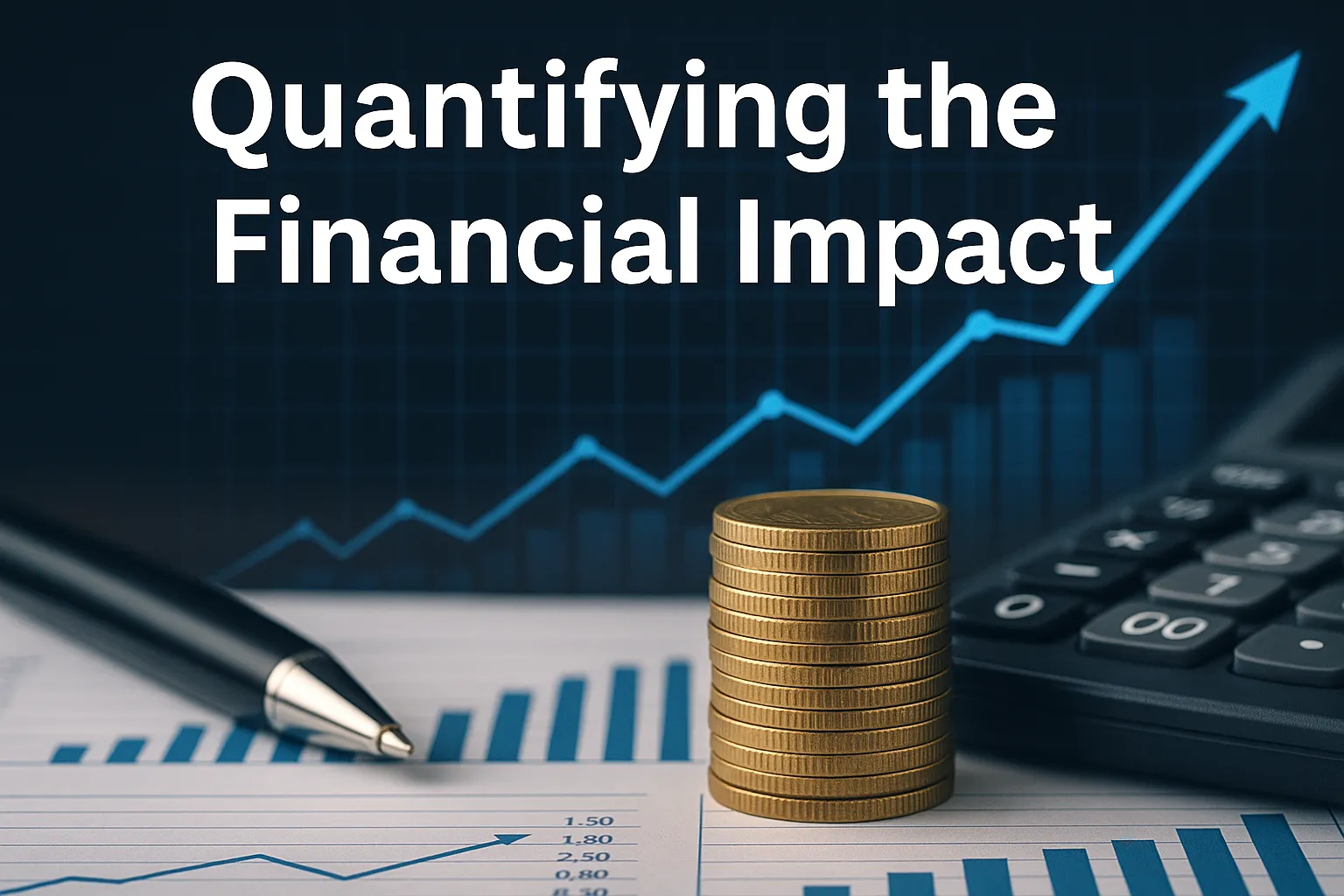
When finance teams ask, “How bad can ad fraud really be?”, the answer is now expressed in tens of billions, not millions. Global studies peg 2025 losses at $41.4 billion, up 10 % year-on-year, while U.S. programmatic waste alone tops $22 billion because barely 36 ¢ of every ad dollar reaches a human. Such leakage doesn’t merely trim margins—it distorts forecasts, spikes customer-acquisition cost, and, in public companies, can even trigger earnings-call restatements. Below we break those figures into industry benchmarks (H3 4.1) and real-world case studies (H3 4.2) so you can quantify your own exposure and prioritize counter-measures that slash agency ad fraud risks.
4.1 — Industry Benchmarks & Loss Estimates
Spider Labs’ 2025 white-paper projects ad-fraud damage climbing from $37.7 billion in 2024 to $41.4 billion in 2025, citing the rising use of large-language-model bots that mimic scroll, click, and dwell signals better than ever. In the United States, the Association of National Advertisers (ANA) calculates that only 36 % of every DSP dollar survives the maze of SSP mark-ups, auction fees, and invalid impressions, leaving $22 billion in immediate savings on the table for brands that tighten verification. Meanwhile, Adalytics’ Fortune-500 audits find that ads are still being served to bots in known data-center IP ranges, even when campaigns pay extra for “premium” bot-avoidance segments, proving that first-tier verification alone no longer guarantees safety. For budget owners, these benchmarks offer a blunt yard-stick: if your blended view-through conversion rate lags peers by >15 %, or if non-human traffic exceeds ANA’s 5 % “acceptable variance” threshold, your agency is under-protecting your spend.
4.2 — Mini-Case Studies of Budget Leakage
- $550 K drained by MFA sites: A 2025 Spider AF audit uncovered 72 million impressions funneled to Made-for-Advertising blogs that produced zero sales. After Spider AF’s PPC Protection tags were deployed, the client’s fake-lead rate collapsed from 65 % to <10 %, freeing almost half-a-million dollars for productive media.
- Fortune-500 brands billed for declared bots: Log-level forensics run by Adalytics showed government and blue-chip advertisers paying CPM premiums while their ads loaded in Google Cloud server farms—machines openly listed on the IAB Spider & Bots registry. Contractual make-goods were impossible because verification vendors had already “cleared” the traffic.
- 40 % fake-user traffic hits household-name brands: A March 2025 Wall Street Journal investigation reported that top verification suites still miss a significant share of bot traffic, leaving Hershey’s, Tyson Foods, and T-Mobile on the hook for wasted impressions and skewed reach metrics.
Together these cases illustrate a simple equation: No independent filter = No budget certainty. In each scenario, inserting Spider AF’s real-time fraud filters—not monthly audits—was the turning point that arrested losses and rebuilt CFO trust.
#5 – Building an Anti-Fraud Framework With Your Agency
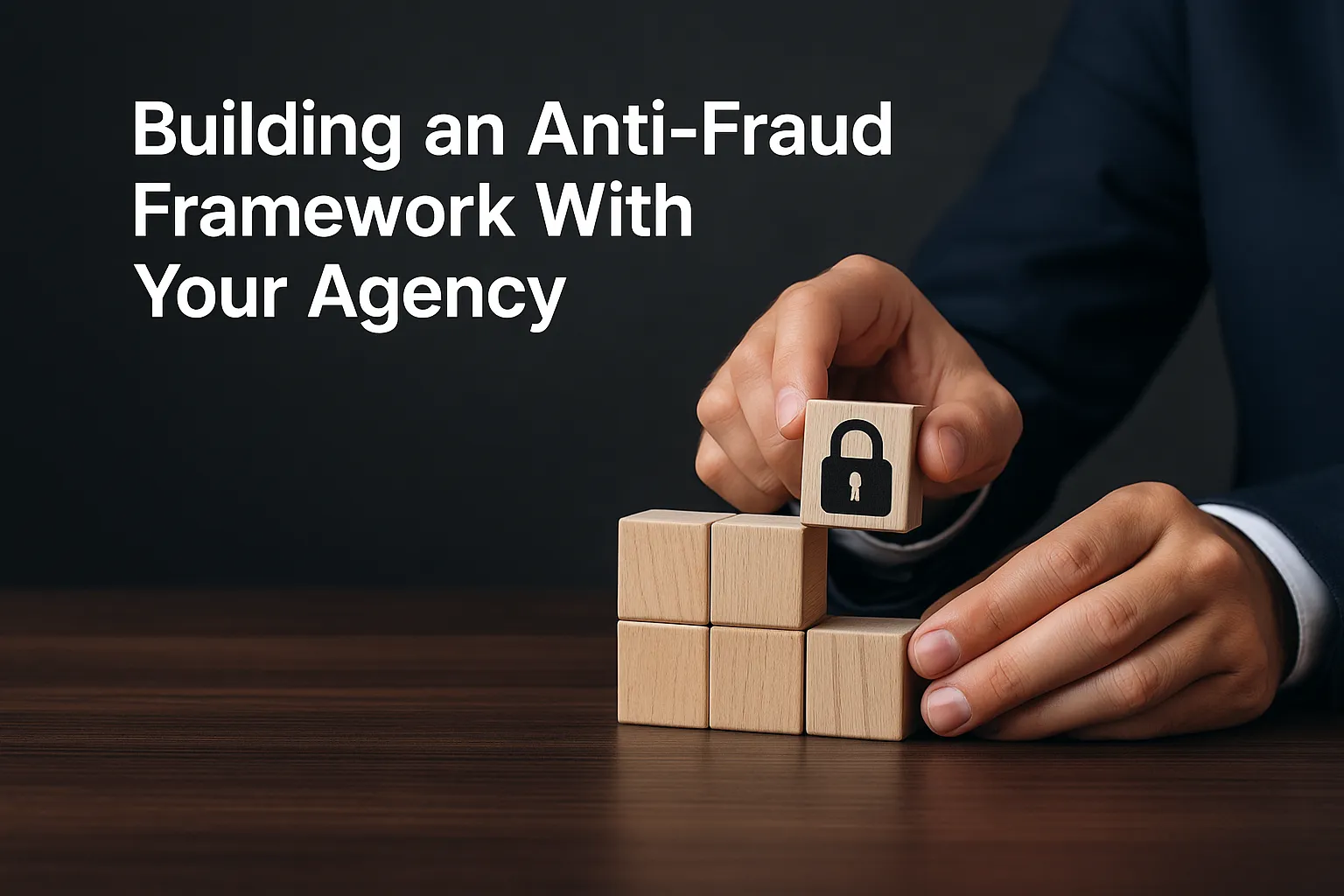
A well-negotiated contract is only the starting line; true protection comes from weaving people, process, and purpose-built technology into every phase of the media lifecycle. The framework below has been distilled from IAB verification standards, MRC IVT guidelines, and field audits where Spider AF closed multi-million-dollar leaks. Treat each H3 as a non-negotiable pillar: skip one, and the others crumble—exposing you to the very agency ad fraud risks we have been quantifying.
5.1 — Pre-campaign Due-Diligence Checklist
Before a single impression is bid, require your agency to:
- Map every supply path and share ads.txt / sellers.json IDs up front.
- Certify MRC IVT-compliance in writing and disclose the exact version followed (2.0 as of 2024).
- Adopt the IAB Ad-Verification Guidelines—especially for iframe handling and geo-IP hygiene.
- Run a 30-day historical traffic baseline through Spider AF to flag suspicious sources before launch.
- Insert data-pass-back clauses granting you raw log access within 48 hours of request.
Executed together, these steps create a zero-trust posture that blocks many fraud vectors before budget leaves the wallet.
5.2 — In-flight Monitoring & Real-Time Alerts
Invalid traffic evolves hourly, so your safeguards must too. Deploy server-side tags at the DSP level and client-side beacons via Spider AF’s PPC Protection; the dual view catches spoofed bids and on-page injection. Configure rolling thresholds (e.g., flag any>3 % IVT spike in a two-hour window) that surface inside Slack or Teams so traders can pause creatives before damage compounds. Spider Labs’ 2025 report notes that bots now mimic human scroll depth within 90 seconds of a campaign going live—making minute-level alerting critical.
5.3 — Post-campaign Auditing & Claw-Backs
When flights end, insist on a log-level reconciliation between the agency’s billable impressions and the numbers captured by your independent tag. Any delta above 3-5 % triggers a make-good—either cash refund, bonus inventory, or partner replacement. Archive these audits for 24 months; they provide evidence if regulators or finance controllers query marketing efficiency later. Pair the audit with Spider AF’s Fake Lead Protection to scrub post-click conversions and reclaim CPA over-payments hiding behind bot-filled forms.
5.4 — Contractual SLAs & Enforcement Clauses
Transform the checklist into binding language:
- IVT ceiling: ≤ 2 % SIVT per MRC standards; breach equals fee rollback.
- Data-access SLA: log files delivered within 72 hrs; failure = 5 % invoice reduction.
- Real-time kill-switch: brand may pause spend unilaterally if IVT > threshold.
- Audit rights: annual third-party review (e.g., ANA recommended practice).
- Cure period & make-good: 15 days to rectify or refund as defined above.
By encoding technical standards into commercial terms, you convert trust into verifiable performance—and give finance a contractually enforceable path to claw back wasted dollars, drastically lowering agency ad fraud risks.
#6 – Spider AF Ad Fraud Protection Deep-Dive
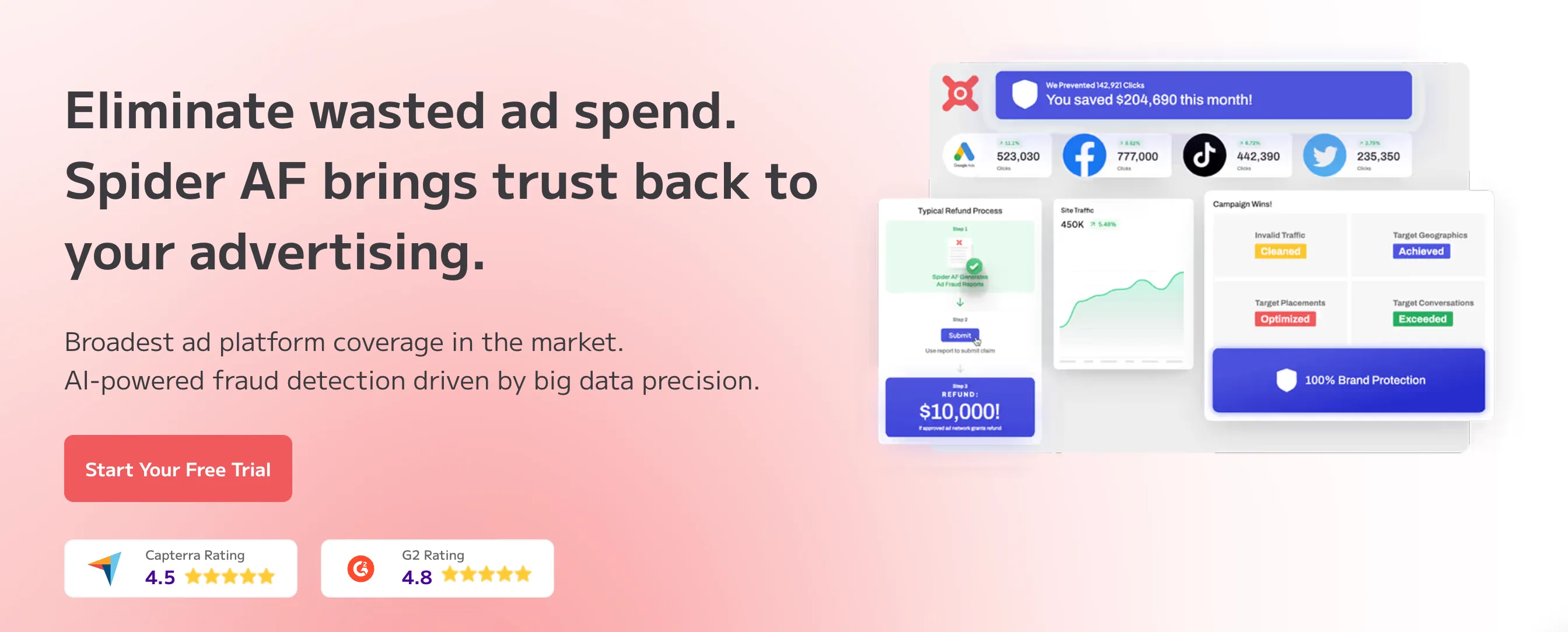
6.1 — How Spider AF Blocks Invalid Traffic (PPC Protection)
Spider AF’s PPC Protection sits “in the pipe,” tagging every click across 30 + ad platforms (Google Ads, Meta, X, TikTok, Microsoft, P-MAX, more) and running it through an AI model trained on 4.1 billion historic clicks. The tag is asynchronous & <1 kB, so page-speed penalties are nil; deployment is literally one script drop, live in under a day. Once active, it:
- Scores each click in real time on IP, device entropy, velocity, and intent signals; anything flagged gets auto-redirected or IP-blocked before bid settlement.
- Enforces brand-safety and MFA exclusion lists at placement level, shielding premium CPM buys from junk inventory.
- Feeds a live dashboard that recalculates fraud cost-savings every minute and exports clean audiences back to the platform to stop remarketing to bots.
Detection is free, and full blocking starts at $150 / month for ≤ 50 k clicks, making it cost-neutral if it recovers even 0.4 % of budget on a $40 k monthly media plan.
6.2 — Fake Lead Protection & SiteScan Integrations
Invalid clicks are only half the battle; bad actors now stuff CRM funnels with junk form-fills that devour sales hours. Spider AF Fake Lead Protection pipes post-click data from ad platforms into its engine, cross-checking user agents, keystroke cadence, and DNS against a threat graph. Bogus submissions are suppressed at the ad-platform level, so CPAs never crystalize and pixel budgets stay honest. A March 2025 beta saw one B2B SaaS client cut CPA 436 % and free 27 % of SDR capacity overnight.
On-site, Spider AF SiteScan monitors every first- and third-party JavaScript call in real time, flagging rogue GTM tags, form-jacking malware, or outdated libraries that could let fraudsters inject adware. It maps script relationships, blocks unauthorized executions instantly, and logs everything for PCI-DSS 4.0.1 audits—giving marketing and security teams a shared, zero-trust lens on tag hygiene.
6.3 — Case Studies, ROI, and Setup Best Practices
Spider AF is already trusted by 500 + brands and protects 18,500 websites; audits report an average 5.12 % hidden ad-fraud rate even after standard platform filters. Results scale fast: a ticketing firm P1 Travel saved $14.8 k in 90 days, while a large e-commerce advertiser recouped $1 million in annual search spend once invalid clicks were blocked. Implementation playbook: (1) add the tag, (2) run a two-week free detection scan, (3) switch “blocking” to on, (4) export cleaned audiences back to ad platforms, (5) schedule monthly log-level reconciliations for claw-backs. Agencies gain an “audit-ready” paper trail; finance gains provable ROAS lift—shrinking agency ad fraud risks to below the MRC’s 2 % SIVT guideline within a single quarter.
#7 – 120-Day Implementation Roadmap
Below is a time-boxed, four-month playbook that folds the safeguards you’ve just learned directly into everyday agency operations. Follow it sequentially; each phase lays groundwork the next one amplifies, ensuring agency ad fraud risks fall fast without up-ending live campaigns.
7.1 — First 30 Days: Quick-Start “Detect & Diagnose”
Milestone: You now know exactly where, when, and how fraud drains budget—data you’ll use to push enforceable terms and prep stakeholders for on-the-fly blocking.
7.2 — Day 31-90: Optimization & Active Blocking
- Turn on blocking rules in Spider AF (click/IP filtration + form validation). Expect 3-7 % of spend to be automatically saved in week 1.
- Segment clean audiences and sync them back to ad platforms; this prevents remarketing to bots and improves machine-learning signals.
- Shift 20-30 % of programmatic spend to inclusion-list domains surfaced as low-IVT during phase 1.
- Institute twice-daily Slack/Teams alerts for any IVT spike > 2 % over baseline; empower agency traders to pause offending supply paths within 15 minutes.
- Begin weekly log-level reconciliations—agency vs. Spider AF counts. Any delta > 5 % triggers immediate make-good discussions.
Milestone: Active defenses are live, budgets start compounding efficiency gains, and the agency’s trading desk is culturally aligned to treat IVT as a zero-tolerance KPI.
7.3 — Day 91-120 & Beyond: Continuous Improvement Loop
- Quarterly Business Reviews (QBRs): Dedicate one agenda block to fraud metrics—IVT %, savings, claw-backs—backed by Spider AF dashboards exported to CSV for finance sign-off.
- A/B Supply-Path Testing: Every 30 days, test a new whitelisted SSP or domain group against the control; retire any source with IVT > 2 %.
- Tag Hygiene Automation: Keep SiteScan in “always-on” mode; configure auto-rollback for newly detected unauthorized scripts.
- SLA Refresh: Update contractual IVT ceilings annually based on latest MRC guidance (currently ≤ 2 % SIVT) and Spider AF performance benchmarks.
- Cross-Team Training: Rotate analytics or finance staff into monthly fraud-review stand-ups so savings stay visible beyond marketing.
Milestone: Fraud mitigation becomes a program, not a project—embedded in culture, codified in contracts, and measured in dollars returned to growth initiatives.
#8 – Secure Your Media Budget with Spider AF: Conclusion & Call-to-Action
Agency ad fraud is not a line-item inconvenience: it is a structural drain that can erase 20-30 % of every programmatic dollar before a real customer even sees your message. Throughout this guide you have mapped the fraud landscape, learned the warning signs, and seen how a disciplined framework—anchored by Spider AF’s PPC Protection, Fake Lead Protection, and SiteScan—can cut invalid traffic below the MRC’s 2 % threshold within one quarter. Implementing the 120-day roadmap means you will:
- Establish transparent, data-rich SLAs that claw back wasted spend.
- Pair real-time server-side filters with client-side forensics, leaving fraudsters nowhere to hide.
- Turn independent audit logs into board-level proof of marketing efficiency—fuel for bigger growth budgets next fiscal year.
The next step is simple. Run Spider AF in detection mode for two weeks. You will receive a no-strings report showing exactly how much budget is leaking through your current agency stack. From there, switching on blocking is one click, and savings begin the same day. Schedule a demo, invite your agency lead, and start converting every recovered dollar into new customers—before your competitors do.











